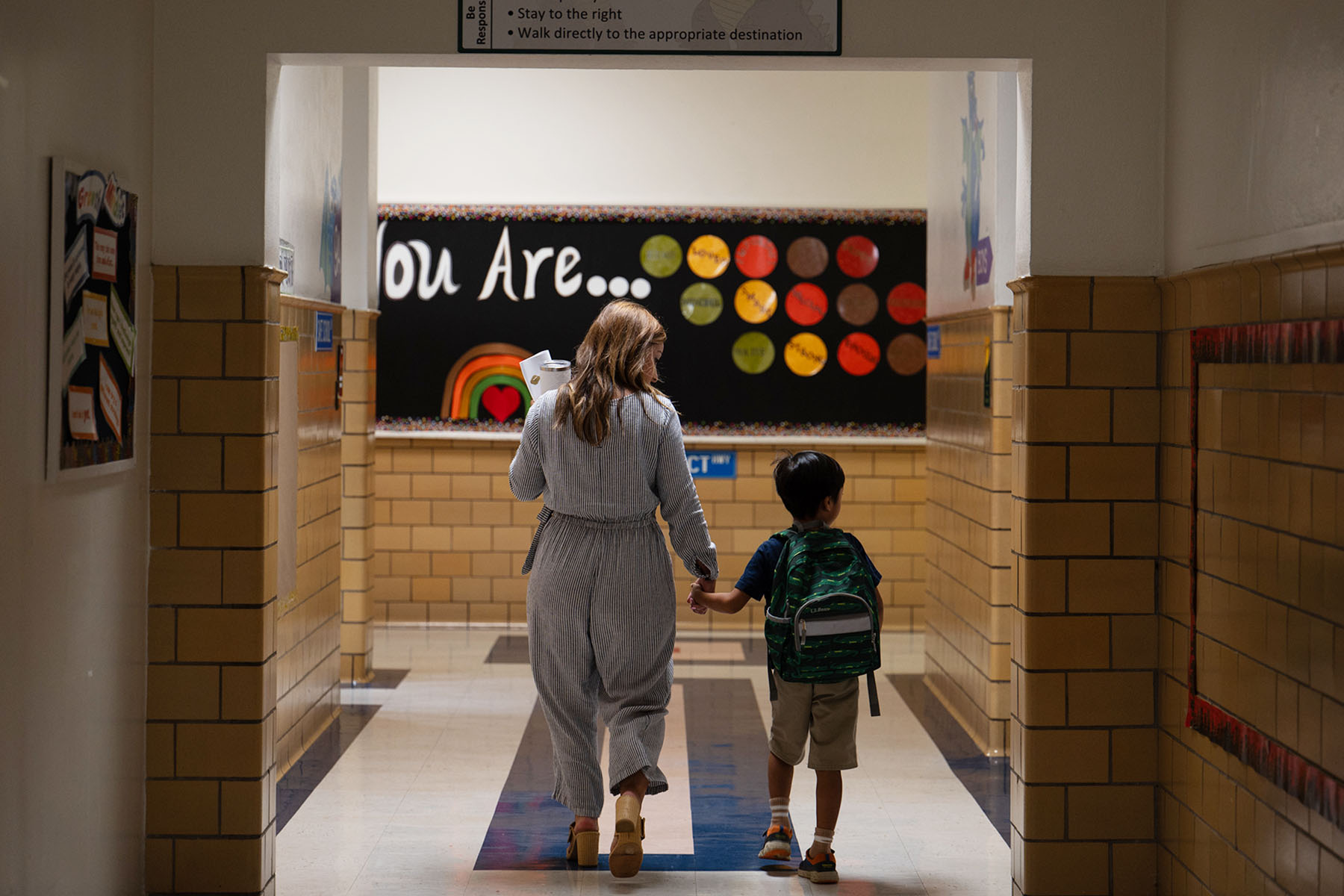The majority of American K-12 public school teachers say they are at least somewhat worried about the possibility of a shooting at their school, according to a new survey conducted by the Pew Research Center.
Fifty-nine percent told Pew researchers that they were concerned about shootings on their campuses, with 18 percent saying they were “very” or “extremely” worried. Only 7 percent of teachers polled said they were not worried at all. School shootings reached a record high last year, with 83 separate incidents occurring in 2023.
Juliana Horowitz, associate director of research at the Pew Research Center, told The 19th that the genesis for this research came from doing preliminary interviews with educators before launching surveys on the state of teaching today. Many brought up concerns about gun violence and safety. “In asking about the day-to-day of being a teacher, I felt like this was a really important topic to capture,” Horowitz said.
Fears about campus safety have become widespread in the 25 years since two senior students opened fire on their classmates at Columbine High School in Colorado. They killed 12 students and one teacher.
Last year, roughly 1 in 4 American teachers reported experiencing a gun-related lockdown at their school. Fifteen percent of respondents said they went through one emergency lockdown, with another 8 percent saying that it happened where they teach more than once.
These numbers tell an important story, Horowitz said. “Especially for high school teachers, this is something that is really top of mind for them.”
High school teachers experience gun-related lockdowns more than any other demographic: 34 percent said they had at least one incident during the previous school year, compared to 22 percent of middle school teachers and 16 percent of elementary school teachers.
Approximately one-third of teachers who work in urban areas said they had a gun-related lockdown during the last school year, compared with 19 percent of those in suburban areas and 20 percent in rural ones.
Teachers in urban schools were the least likely to say that they felt adequately prepared by their school, with only 21 percent saying their school had done a good or excellent job, compared with 32 percent of teachers in suburban districts and 35 percent of teachers in rural ones.
Most of the surveyed teachers pointed at the role mental health care could play in addressing the gun violence crisis. A large majority — 69 percent — said they believed improving mental health screening and treatment for children and adults would be extremely or very effective in preventing school shootings. This emphasis on improving mental health held across party lines, with 73 percent of Democratic teachers and 66 percent of Republican teachers all saying that investment in mental health resources would be an extremely or very effective prevention tool.
Only 13 percent said that allowing teachers and administrators to carry guns in school would be extremely effective at curbing this form of gun violence.
Party affiliation had a lot to do with teachers’ opinions on how to be proactive about school safety. Sixty-nine percent of Republican teachers were in favor of having police officers or armed security in schools, compared with 37 percent of Democrats; 43 percent were in favor of metal detectors compared with only 27 percent of Democrats; and 28 percent were in favor of allowing teachers and administrators to carry guns, compared with just 3 percent of Democrats.
Horowitz said that teachers tend to lean Democratic, meaning that the majority of those surveyed are more likely to identify as Democrats than the public overall. “The results among Democratic teachers mirror more closely what we see overall among teachers — and so that’s why it’s really important to also look at these differences and see how Democratic and Republican teachers are reacting differently to these questions.”
She also points to the 3 percent of teachers who say that staff at their schools are allowed to carry guns. But that circumstance depends on the political leanings of the school district where the campus is located. Teachers in districts that went for President Donald Trump in 2020 saw this number reach 5 percent. In districts that went for President Joe Biden, it dropped to 1 percent. “I think that captures that partisan differences are important not just among teachers, but that there are partisan differences in terms of the sort of political environment where the schools are that they teach in,” Horowitz said.
For this study, Pew surveyed 2,531 members of RAND’s American Teacher Panel, which is nationally representative. Survey data was weighted to state and national teacher characteristics to account for differences in sampling and response.
Parents also echo teachers’ concerns, Horowitz added. A Pew Research Center study released last fall found that a third of American parents said they were extremely or very worried about a shooting at their child’s school, with an additional 37 percent saying they were somewhat worried. That means about seven in 10 parents have fears about school shootings.
This survey did not tie school shooting concerns to how teachers intend to vote in the November election. But Horowitz believes it is clear that issues affecting schools “are things that people will be talking about in the context of the election and politics.”







